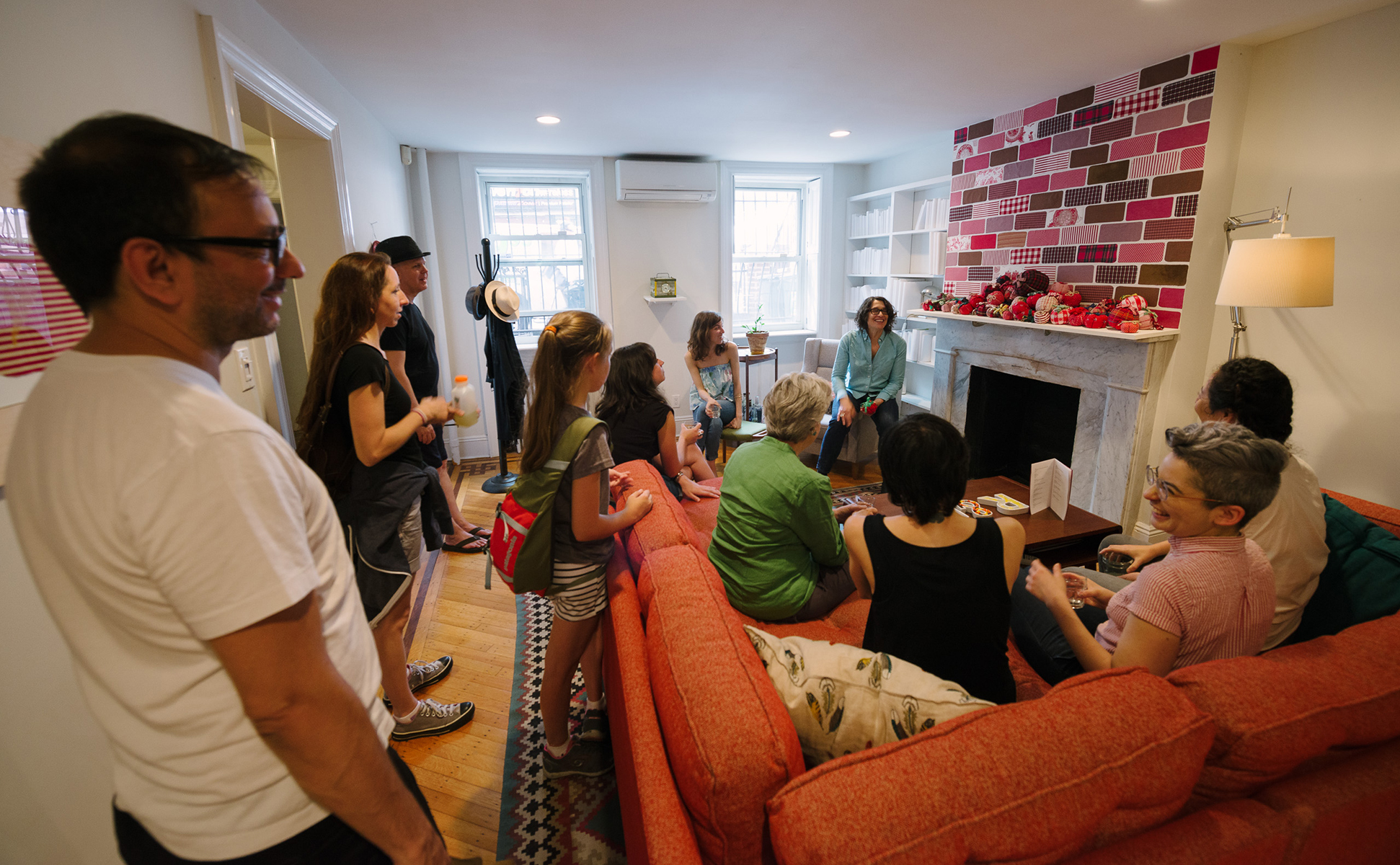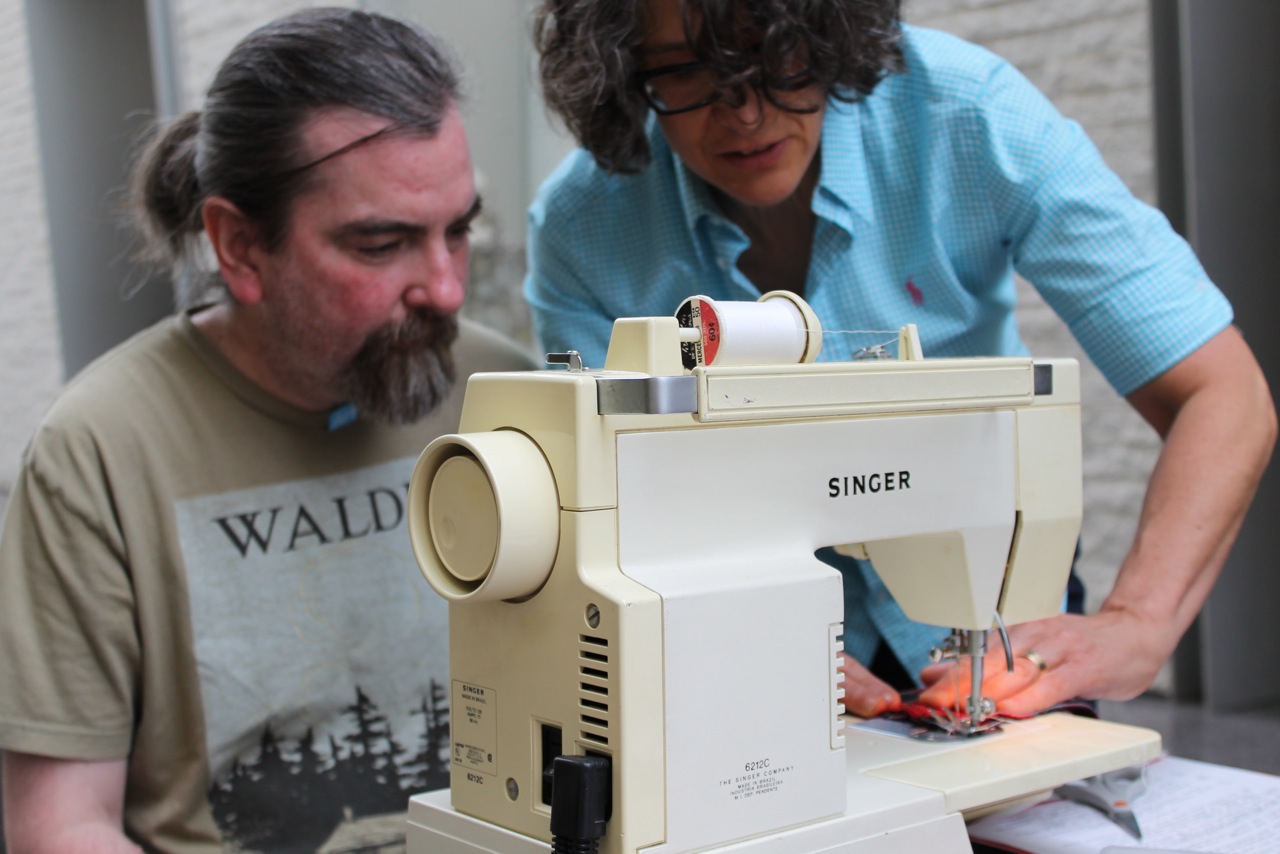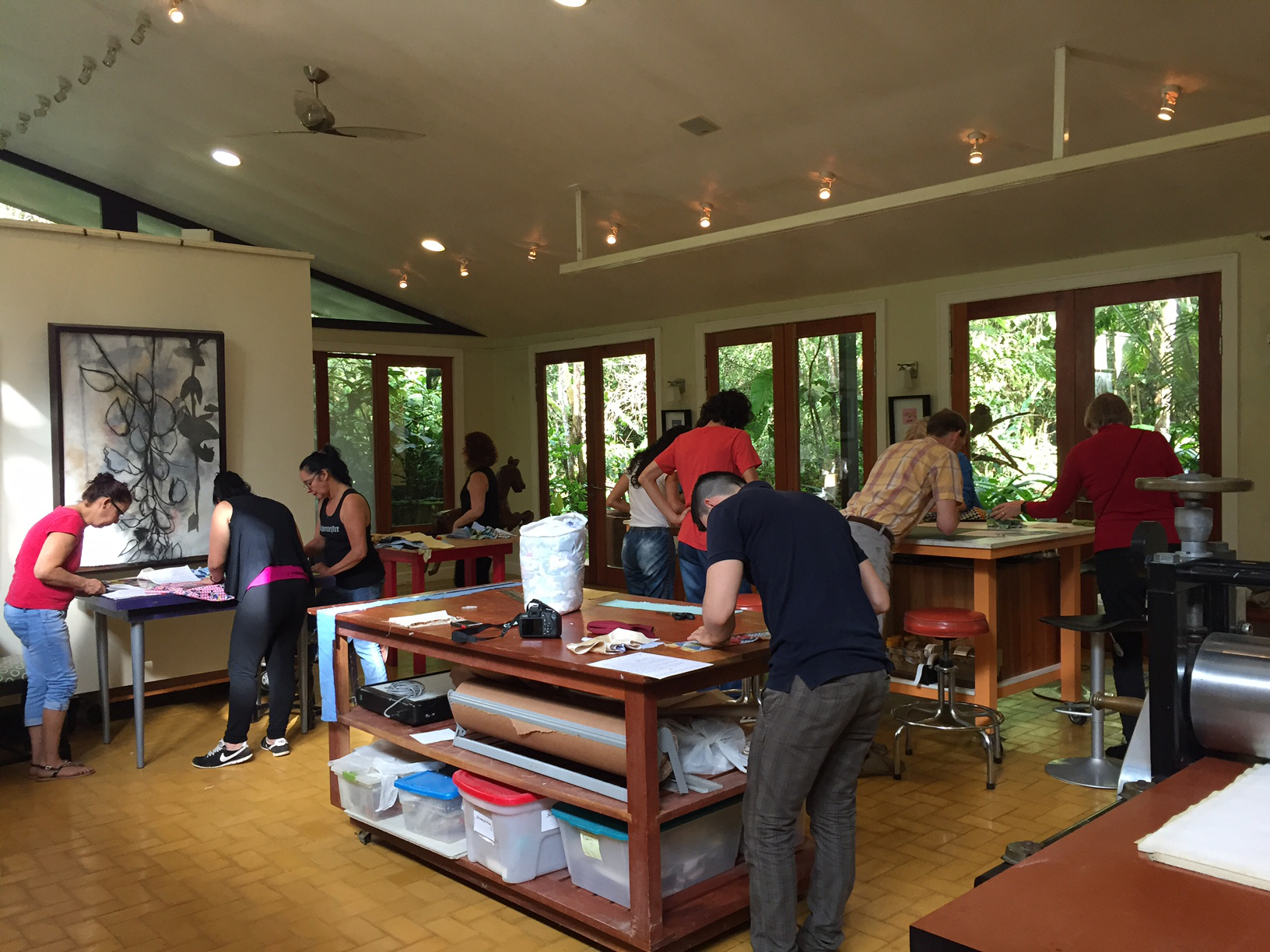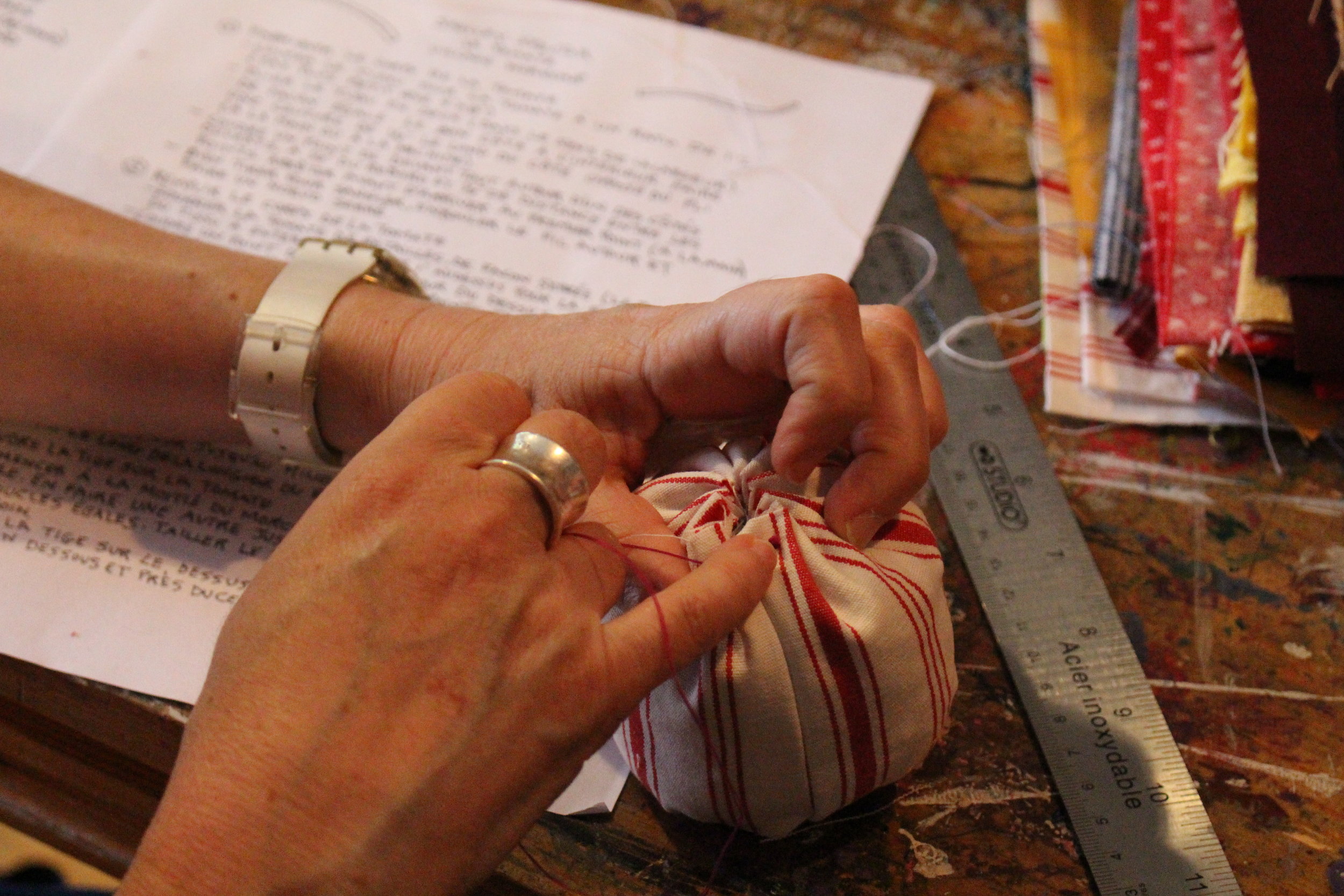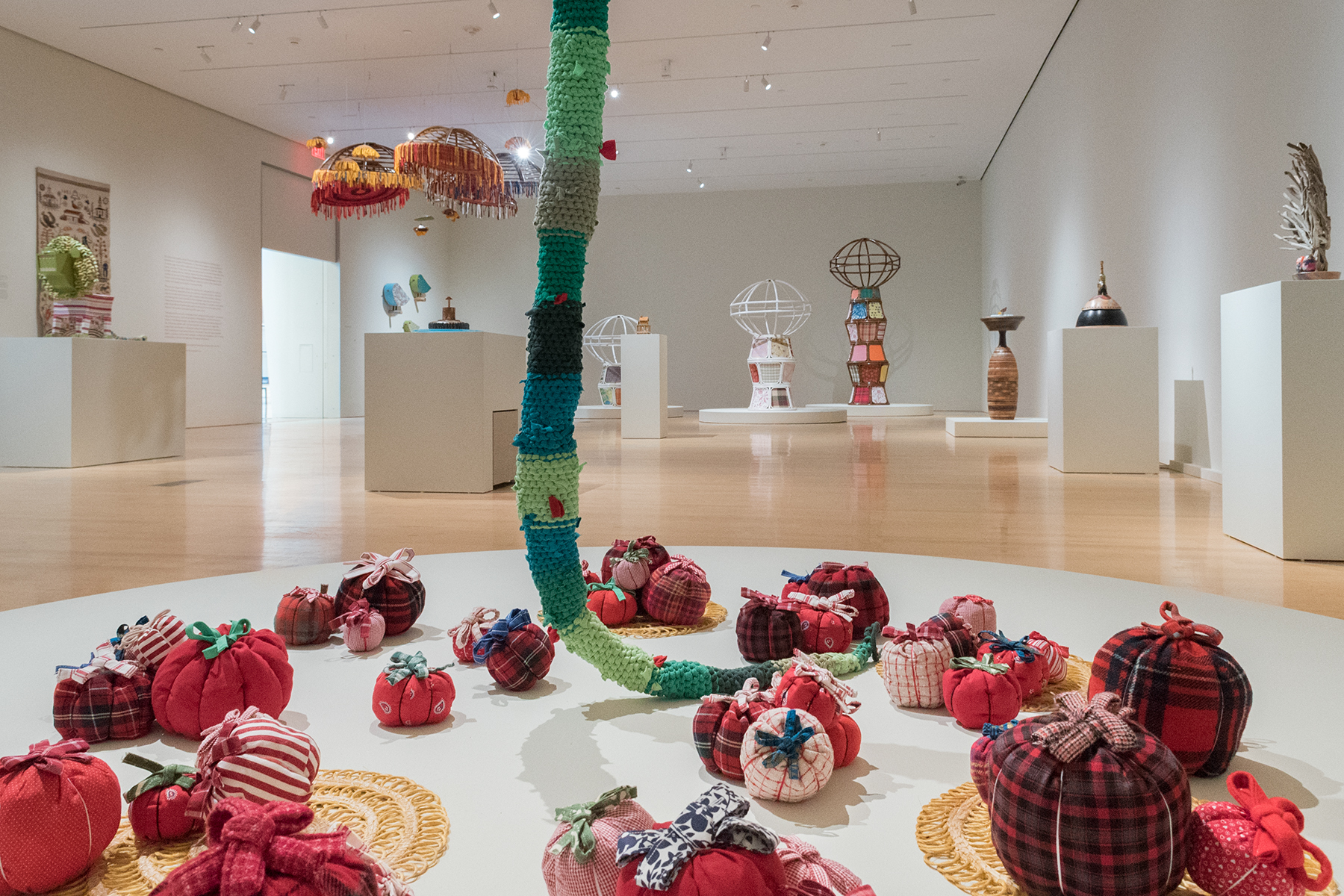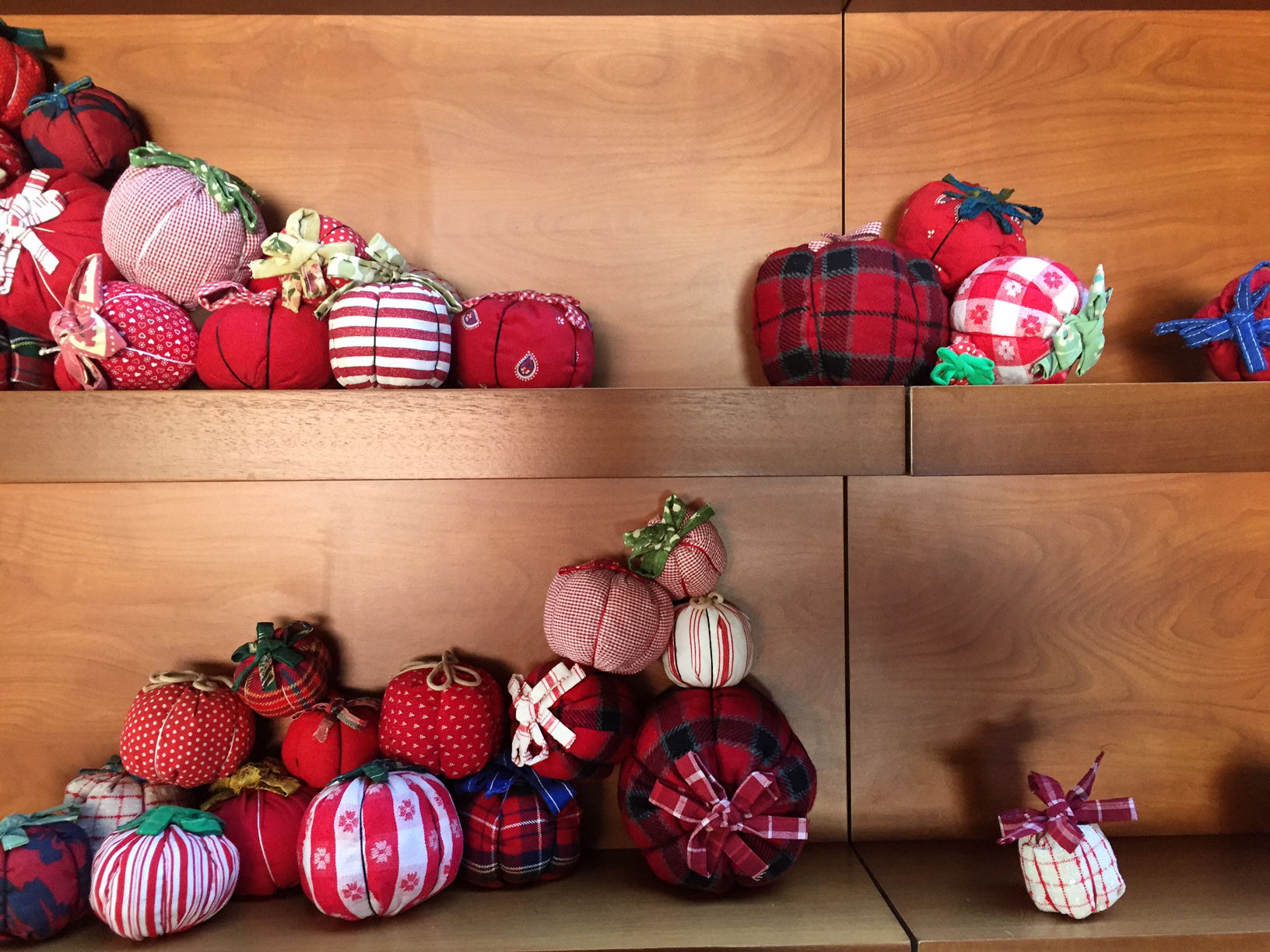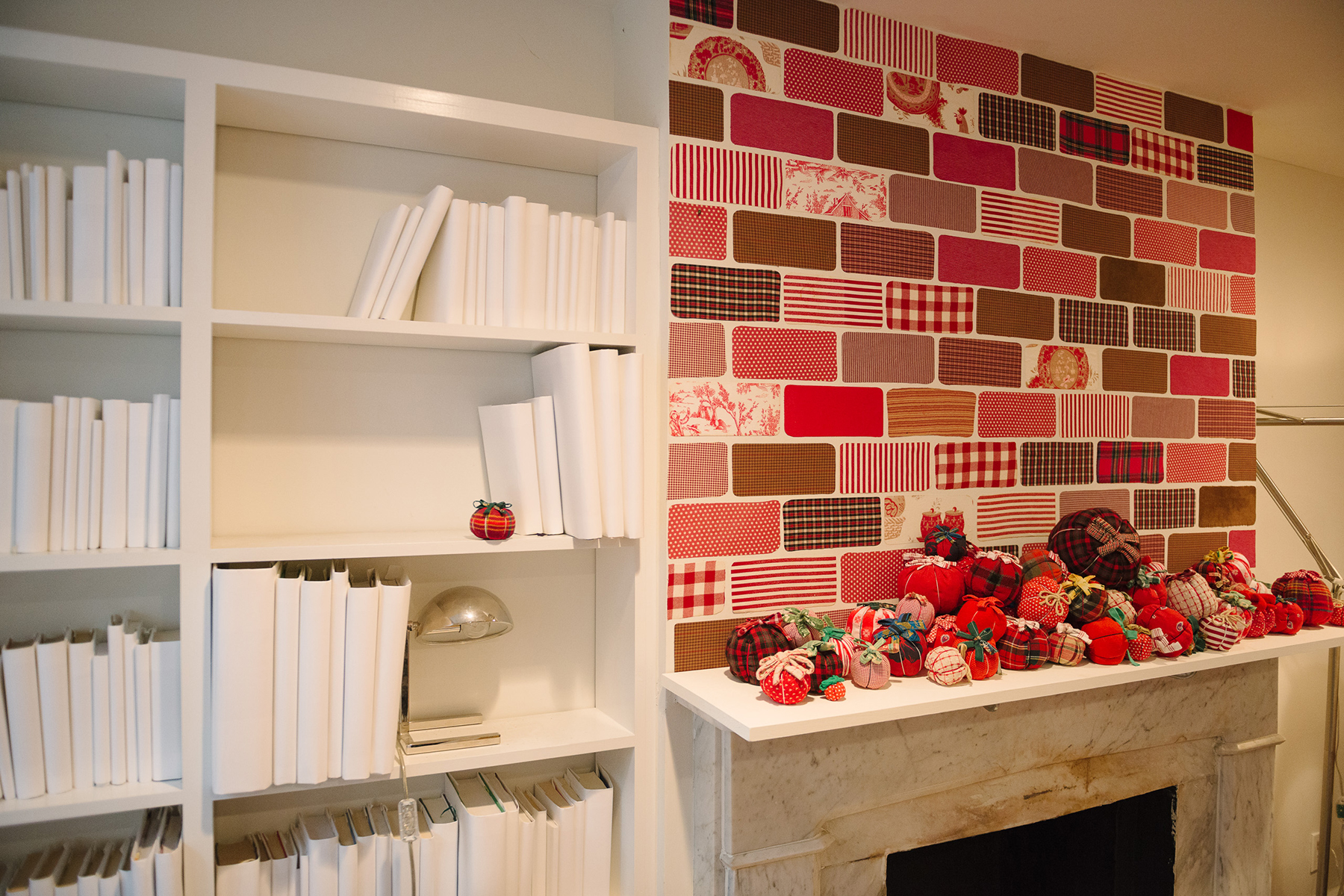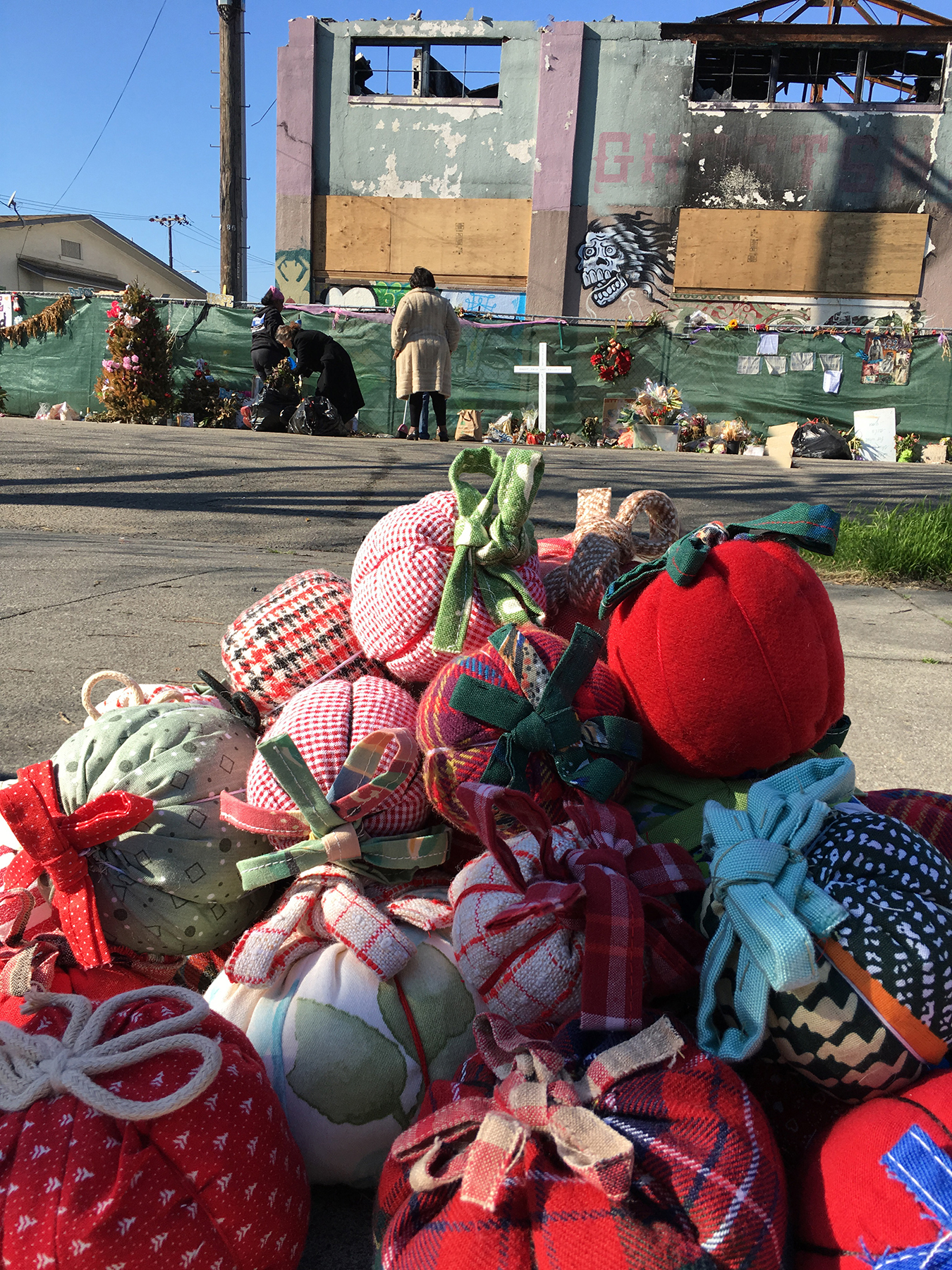Village
2015- Present
Village is inspired by the tomato shaped pin-cushion and its Victorian roots as a symbol of hope at new beginnings. Spector leads workshops on how to make a pin cushion, and the participants’ creations are then added to an expanding installation. At the closing of its first exhibition at the Philadelphia Museum of Art in 2015, Spector began to travel with the project and engage new collaborators. All of the materials come from deconstructed clothing and textile goods.
To next project
